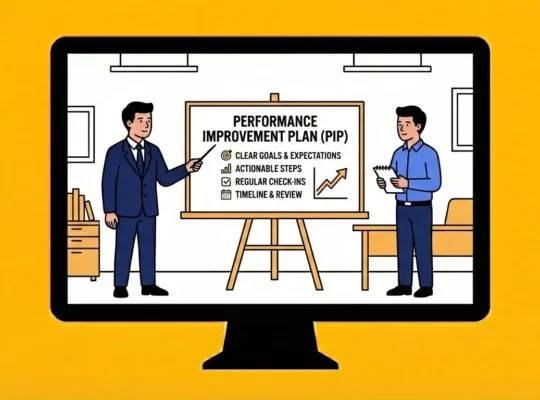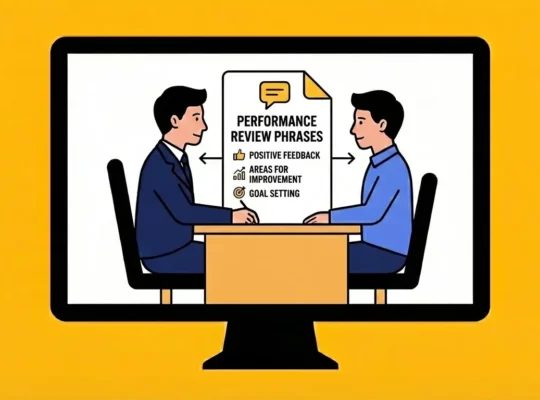Agile talent pools offer companies the flexibility and adaptability necessary to navigate the fast-changing business environment. By developing a workforce that can swiftly respond to new challenges, companies can maintain a competitive edge. At Review.jobs, we recognize how vital it is for businesses to build agile talent pools that help them pivot efficiently, filling roles with skilled employees who can handle evolving market demands. In this article, we’ll explore the components, benefits, and strategies for building an agile talent pool that fosters innovation, growth, and resilience.
- What Is an Agile Talent Pool?
- The Importance of Agile Talent for Business Success
- Core Elements of an Agile Talent Pool
- The Benefits of Building an Agile Talent Pool
- Strategies for Developing an Agile Talent Pool
- Challenges in Implementing Agile Talent Strategies
What Is an Agile Talent Pool?
An agile talent pool is a group of highly skilled employees who can quickly adapt to new roles, responsibilities, or projects based on the organization’s needs. Unlike traditional static talent pools, which focus on specific job roles, agile talent pools are dynamic, flexible, and diverse, ensuring that organizations have access to a broad range of skills whenever required.
A tech company may need to scale its development team for a project launch. Instead of hiring externally, they draw from their agile talent pool—a group of employees trained in cross-functional roles—allowing them to scale quickly without the lengthy recruitment process.
The Importance of Agile Talent for Business Success
As businesses face continuous market shifts, they need to adapt at a faster rate than ever before. This shift to an agile talent management framework gives organizations the tools to handle these changes effectively. Agile talent pools allow for:
- Enhanced Market Responsiveness: Agile talent pools enable organizations to quickly respond to customer demands and market shifts by reallocating resources and skills as needed.
- Optimized Talent Utilization: By effectively managing internal talent, organizations can reduce the need for external hiring and training costs, leading to improved efficiency and cost-effectiveness.
- Fostered Innovation: Agile talent management encourages cross-functional collaboration and knowledge sharing, fostering a culture of innovation and creativity.
Why Agile Talent is Crucial for Businesses
Businesses are increasingly shifting from traditional talent management to agile talent management strategies. This transformation enables organizations to move away from rigid, hierarchical structures, offering more flexibility and adaptability.
- Enhanced Agility: Agile talent pools enable organizations to quickly adapt to market shifts by leveraging internal talent and reskilling employees as needed.
- Competitive Advantage: By building a workforce that is adaptable, innovative, and skilled, organizations can gain a competitive edge in the market.
- Reduced Costs: Leveraging internal talent can reduce the need for external hiring and training, leading to cost savings.
Global giants like Google and Amazon have successfully integrated agile talent pools into their organizations. These companies utilize cross-functional teams, internal mobility programs, and continuous learning initiatives to empower employees and foster a culture of innovation.
Core Elements of an Agile Talent Pool
Building a robust agile talent pool requires a focus on several core elements:
Diverse Skill Set
- Innovation and Creativity: A diverse workforce brings together a wide range of perspectives and experiences, fostering a culture of innovation and creativity.
- Problem-Solving: Diverse teams can approach challenges from multiple angles, leading to more effective problem-solving and decision-making.
- Adaptability: A diverse skill set equips organizations to respond to a wider range of challenges and opportunities.
Internal Talent Mobility
- Employee Retention: Promoting internal mobility can enhance employee satisfaction and reduce turnover by providing opportunities for growth and development.
- Skill Development: Employees can acquire new skills and experiences through cross-functional roles, accelerating their career progression.
- Improved Efficiency: Leveraging existing talent within the organization can reduce the need for external hiring, saving time and resources.
Continuous Development and Upskilling
- Adaptability: Investing in upskilling programs ensures that employees possess the necessary skills to adapt to changing market conditions.
- Innovation: Continuous learning fosters a culture of innovation and encourages employees to explore new ideas and approaches.
- Employee Engagement: Upskilling opportunities can enhance employee engagement and satisfaction by demonstrating a commitment to their professional development.
Cross-functional Collaboration
- Enhanced Problem-Solving: Cross-functional teams can bring together diverse perspectives and expertise, leading to more effective problem-solving and decision-making.
- Innovation: Collaboration across departments can foster a culture of innovation and creativity.
- Improved Communication: Working together on cross-functional projects can improve communication and teamwork skills.
The Benefits of Building an Agile Talent Pool
Faster Response to Market Demands
- Agility and Adaptability: An agile talent pool enables organizations to quickly adapt to changing market conditions and customer needs.
- Reduced Time-to-Market: By leveraging internal talent, companies can accelerate the development and launch of new products or services.
Employee Retention and Engagement
- Career Development: Internal mobility and upskilling opportunities provide employees with a sense of growth and progression, leading to increased job satisfaction and loyalty.
- Reduced Turnover: A culture of development and advancement can reduce employee turnover, saving time and costs associated with recruitment marketing and onboarding.
Cost Efficiency
- Reduced Hiring Costs: By leveraging existing talent, organizations can minimize external hiring expenses.
- Faster Time-to-Market: Upskilling current employees can accelerate product development and reduce the time to market.
Diversity and Inclusion
- Diverse Perspectives: An agile talent pool with a diverse range of skills and backgrounds fosters a culture of innovation and creativity.
- Inclusive Workplace: A focus on internal mobility and development can create a more inclusive and equitable work environment.
Strategies for Developing an Agile Talent Pool
Cultivating an agile talent pool is no longer a luxury, but a strategic imperative in today’s dynamic business environment. Here’s how organizations can build a responsive workforce equipped to handle change and drive success:
Leadership Support: Setting the Stage for Agility
Agility starts at the top. For agile talent strategies to succeed, leadership must actively champion these initiatives. Executives and senior management play a crucial role in setting the tone and fostering a culture of continuous learning and internal mobility. This can be achieved by:
- Communicating the importance of an agile talent pool and its benefits for both the organization and its employees.
- Allocating resources for upskilling programs, talent mapping initiatives, and the creation of adaptable roles.
- Leading by example by actively participating in training programs and promoting a growth mindset.
Data-Driven Talent Management: Making Informed Decisions
Building an agile talent pool requires a data-driven approach. Talent mapping and analytics provide crucial insights to bridge the gap between current skills and future needs. Organizations can leverage talent mapping to:
- Identify skill gaps across departments and functions.
- Forecast future talent needs based on business goals and market trends.
- Develop targeted upskilling programs to address identified skill gaps.
Flexible Job Roles: Shifting from Rigid Structures
Rigid job descriptions can hinder agility. Creating adaptable roles that align with employee strengths and allow for growth is crucial. This shift requires companies to:
- Focus on skill sets rather than specific job descriptions.
- Create career development paths that allow employees to move fluidly within the organization.
- Embrace lateral moves that provide opportunities for employees to acquire new skills and experiences.
Fostering an Agile-Friendly Culture: Collaboration and Innovation
An agile-friendly culture is the cornerstone of a future-proof workforce. Organizations need to promote a mindset that encourages:
- Collaboration across teams to leverage diverse perspectives and expertise for problem-solving.
- Open communication to facilitate information sharing and idea exchange.
- Continuous learning to stay abreast of industry trends and embrace new technologies.
Employee Feedback: The Vital Voice
Staying in tune with workforce needs is critical for maintaining an agile talent pool. Organizations need to actively collect and act on employee feedback. This can be achieved through:
- Employee engagement surveys to understand employee sentiment and identify areas for improvement.
- Stay interviews to identify potential flight risks and address concerns.
- Performance management reviews focused on skill development and career growth aspirations.
Building a Thriving Talent Pool with Review.jobs
Review.jobs offers valuable employee review tools that can help organizations adapt their talent strategies and ensure a dynamic and satisfied workforce. The platform allows companies to:
- Gather anonymous and honest employee feedback on workplace culture, learning opportunities, and career development opportunities.
- Analyze trends and identify areas for improvement based on employee sentiment data.
- Showcase positive feedback on employer branding materials to attract top talent.
Challenges in Implementing Agile Talent Strategies
Resistance to Change
Employees and managers accustomed to traditional hierarchies may resist agile talent strategies. Overcoming this resistance requires clear communication of the benefits of agility and a structured transition plan.
Balancing Structure with Flexibility
Finding the right balance between agile practices and maintaining organizational control is a challenge. Leaders must implement flexible structures while ensuring alignment with the company’s talent acquisition goals.
Training and Continuous Learning
Ensuring employees have the right skills to thrive in an agile environment is an ongoing challenge. Businesses must invest in robust training and upskilling programs to maintain an agile workforce.
Common Agile Talent Challenges vs. Solutions
| Challenge | Solution |
| Resistance to change | Clear communication and leadership support |
| Lack of internal mobility | Promote cross-functional roles and upskilling |
| Balancing structure and agility | Create flexible frameworks aligned with company objectives |
| Skill gaps in the workforce | Invest in continuous training and employee development |
Agile talent pools are the cornerstone of modern workforce management. By building a flexible and dynamic pool of employees, businesses can quickly adapt to changes, foster innovation, and maintain long-term success. Review.jobs is committed to helping companies build strong, diverse, and effective talent pools that will thrive in an ever-changing market environment.





